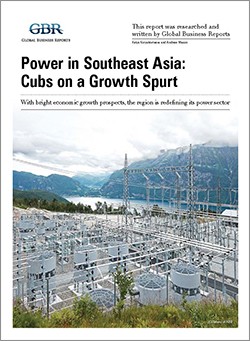
PUBLICATION
Southeast Asia Power 2013 POWER Release
Southeast Asia, with an increasingly affluent population of 600 million, must kick investment in the power sector into the next gear to meet expected demand for electricity. According to a study from Accenture, the region’s economy is projected to grow by $735 billion by 2020. Over this period, ASEAN’s most dominant economies, Indonesia, Malaysia, Thailand, and the Philippines, collectively referred to as tiger cubs, will need to boost their generation capacity and improve their connectivity in order to facilitate this economic growth.
Despite barriers to entry and state control over power sectors, those familiar with the region are making commitments. Moreover, recent events suggest the state model is shifting, albeit slowly. The Philippines is currently in the messy process of liberalizing its power market, it has shed state-owned gen-cos and is introducing full retail contestability. Thailand, Malaysia, and Indonesia, meanwhile, are looking at diversifying their generation mix to quickly add desperately needed generation capacity.







